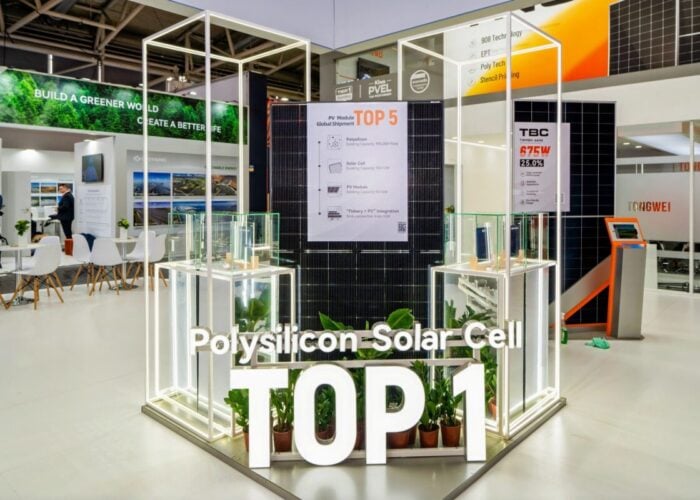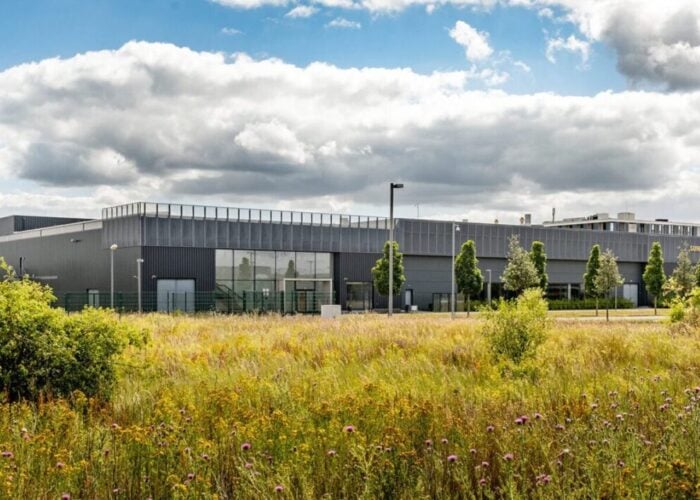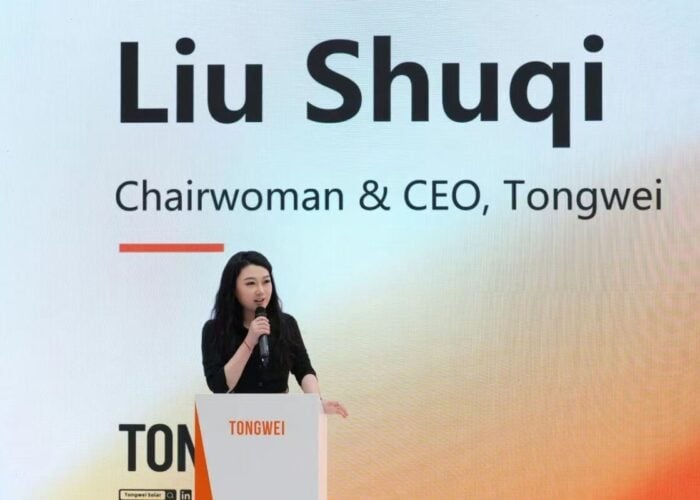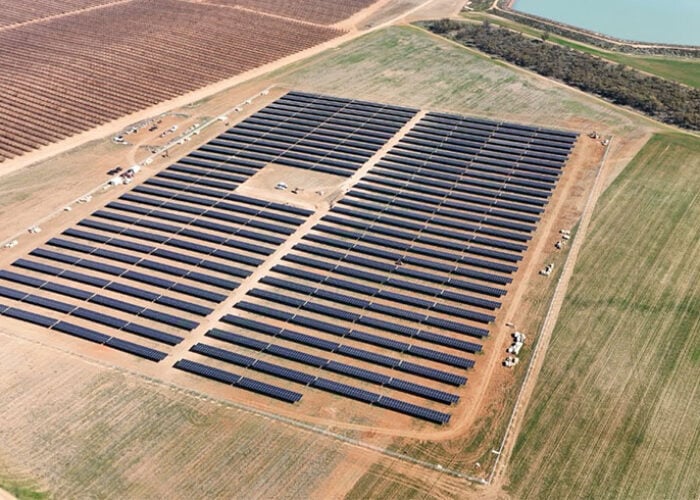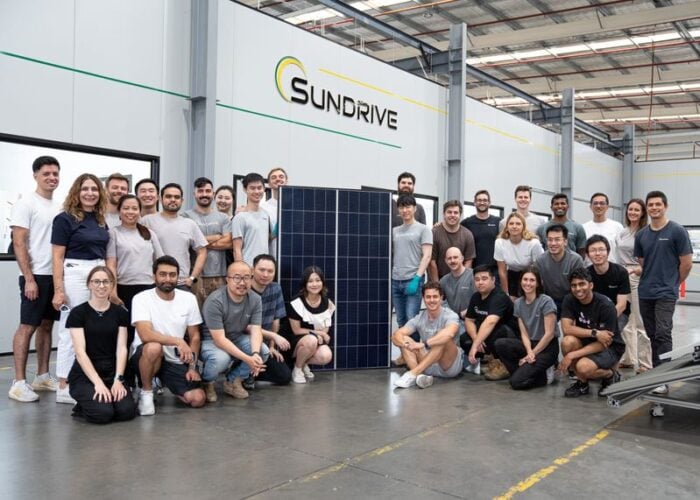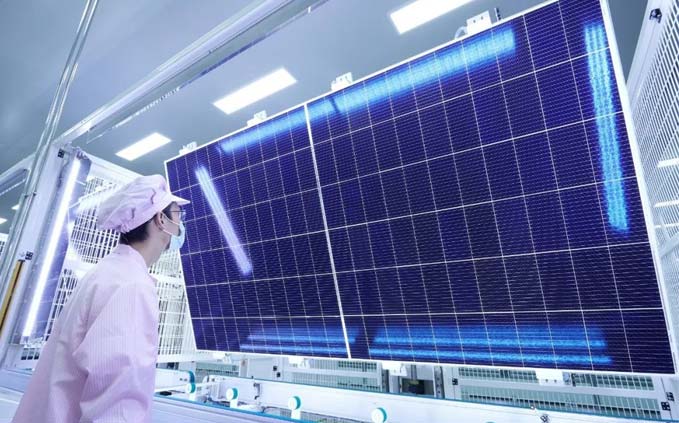
In the n-type sector, cutting-edge technology is heterojunction’s (HJT) key to success.
On the premise of choosing the path to cost reduction, HJT’s position is mostly reflected in cell efficiency and module output performance. In 2023, HJT modules broke their records of output performance multiple times. Many companies and research teams demonstrated impressive results in major releases this year, effectively consolidating the competitiveness of HJT technology and promoting the development of solar energy.
Unlock unlimited access for 12 whole months of distinctive global analysis
Photovoltaics International is now included.
- Regular insight and analysis of the industry’s biggest developments
- In-depth interviews with the industry’s leading figures
- Unlimited digital access to the PV Tech Power journal catalogue
- Unlimited digital access to the Photovoltaics International journal catalogue
- Access to more than 1,000 technical papers
- Discounts on Solar Media’s portfolio of events, in-person and virtual
2023 HJT modules: New record for output and efficiency
Among the released solar modules, HJT modules have reached an output of no less than 700W. Huasun Energy ranked first with 744.43W of output and 23.96% conversion efficiency.
On 25 September, Huasun Energy announced that its Himalaya G12-132 HJT module achieved an output of 744.43W and a conversion efficiency of 23.96% certified by TÜV SÜD, a third-party inspection association, creating a new record in both dimensions of HJT modules.
Huasun updated its HJT module output record earlier in the year. In late March, Huasun’s Himalaya G12-132 HJT module reached 723W maximally in output with a conversion efficiency of 23.28%, also certified by TÜV SÜD. The latest record is a further improvement on the foundation of this one.
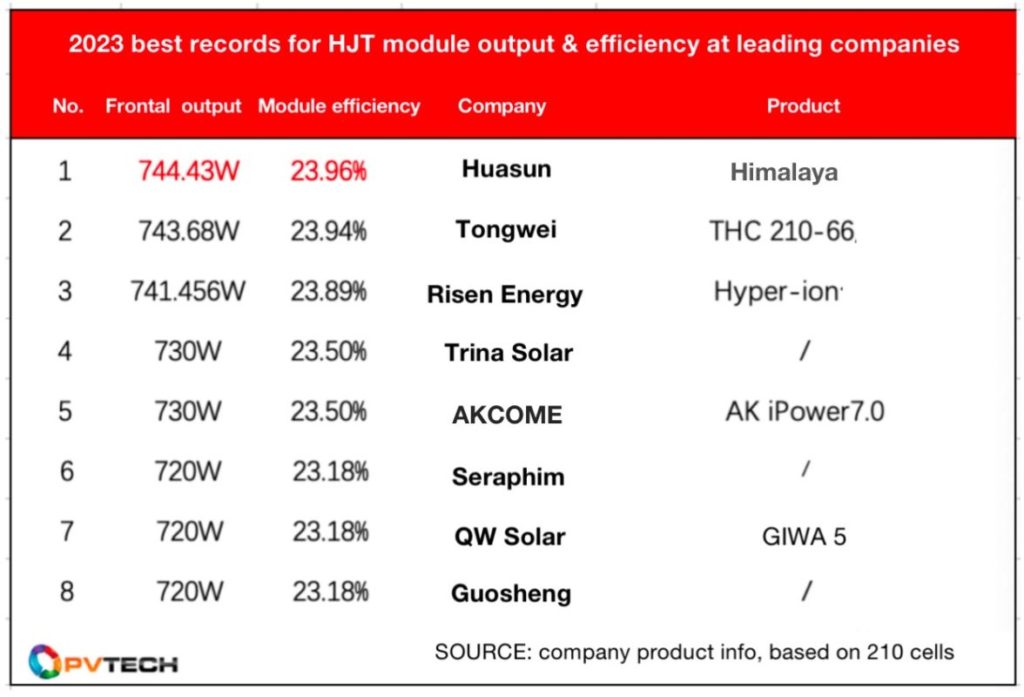
It is worth noting that Huasun is also leading the industry in terms of mass production. On 5 September, Huasun announced the first product rollout of the Xuancheng Phase III high-efficiency HJT module production line and officially started the mass production stage. The highest output of the first batch of HJT modules reached 720W, once again renewing its record, signifying a new stage for PV module manufacturing at 720W+.
In addition, Tongwei’s 210-66 HJT module ranked second with an output of 743.68W and a conversion efficiency of 23.94%.
From January to July of this year, Tongwei updated its latest records of output and efficiency several times from 720.71W to 743.68W, with the highest one released on 27 July 2023. Moreover, Tongwei’s self-developed 210-66 HJT module reached a front-side output of 743.68W, with a conversion efficiency of 23.94%. This was the fourth time that Tongwei created a HJT module output record in 2023.

Risen Energy held the third place, announcing their impressive results earlier this year. In February, Risen Energy’s HJT module achieved a maximum output of 741.456W and a conversion rate of 23.89%, certified by TÜV SÜD, breaking its 23.65% record in December 2021, also setting a world record for the highest output and conversion efficiency of HJT modules at the time.
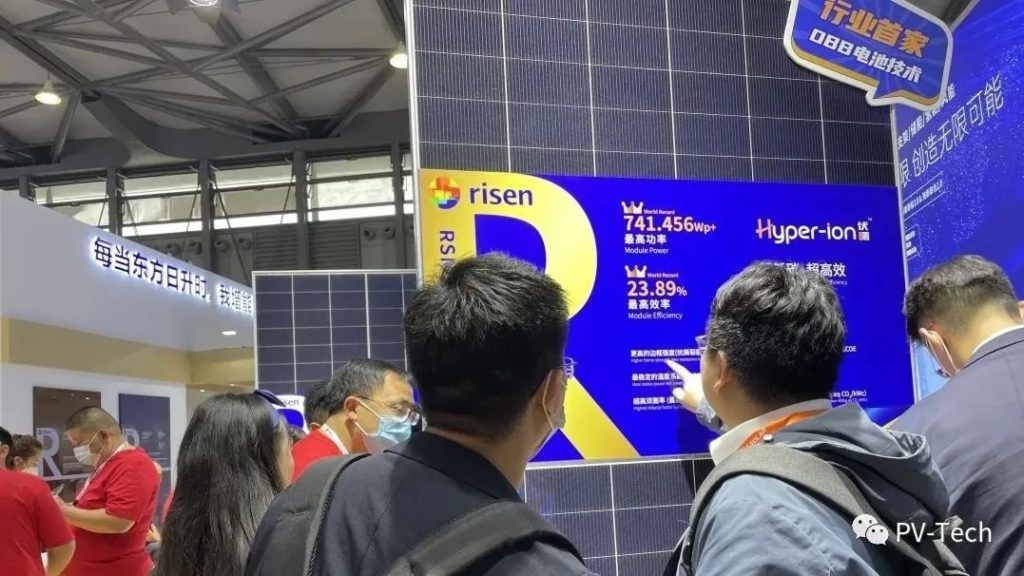
Risen Energy is also working on reducing the cost of HJT modules. According to reports, the company expected to bring HJT’s full production cost to the same level of PERC by the end of the year through measures like reduced silver paste, less indium for transparent conductive oxide (TCO) film, thinner silicon wafer and independent production.
High-efficiency solar cells at 25%+: Mass production capability in the new era
In addition to the high output modules, the high conversion efficiency of cells is another advantage of the HJT technology. Huasun’s performance is particularly outstanding in this area. The competitive edge is not only reflected in its mass-produced module output but also in its mass-produced cell efficiency.
On 6 September, the first phase of the Huasun Dali 2.5GW cell project, located in the Yunnan province, was completed, with the first batch of 210 HJT cells successfully produced. The average conversion efficiency of the cell was 25.23%, and the maximum conversion efficiency of a single cell reached 25.69%, once again breaking the company’s cell production efficiency.
It is reported that the factory’s HJT cells adopt bifacial microcrystal technology combined with silver copper paste. With further breakthroughs enabled by equipment running-in and technical optimisation, manufactured efficiency is expected to achieve an average of 25.5%.

A CTO of a PV company told PV Tech that regardless of the technology, a manufactured efficiency of more than 25% is a high threshold.
“Without technological foundation and our R&D team, there will be many difficulties to achieve mass production with high yield, and the process towards large-scale production will be very long.”
Technology is not enough to help achieve the mass produced cell efficiency of more than 25%. It also depends on the company’s talents, joint R&D capabilities and material selection.
At the same time, Risen Energy is also promoting HJT manufacturing. On 14 September, Risen Energy said during a performance presentation that it will ramp up mass-produced conversion efficiency to 26% next year, with the yield at 99%.

Recently, Akcome also announced that thanks to continuous process and equipment upgrading, the average mass produced conversion efficiency of its single-sided microcrystal HJT cell was 25.3%-25.4%, with the best batch exceeding 25.6%, and the production yield was 98%. In the fourth quarter of this year, the company will manufacture bi-facial microcrystal HJT cells, with a projected average conversion efficiency exceeding 25.6%-25.7%.
Akcome said that it initially possessed the manufacturing capacity of zero busbar (0BB) modules and is conducting capacity ramping tests. The product is expected to enter mass production by the end of this year or early next year.
With the efforts of Huasun, Tongwei, Risen Energy and other companies, HJT modules and cells will achieve better performance, record-breaking output and efficiency, enabling a brighter future for mass production of the technology.


